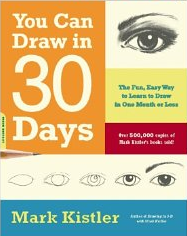I tend to reflect as I go so I'll not repeat myself but there are one or two things that really stand out for me now that I'm at the end of Part 1.
- I'd read that anyone can draw given the right "vocabulary" and a few rules. Maslen and Southern (2014) liken it to learning to write. Having gained a few skills during the course of Part 1 I'm thinking that they are right. I'm using what I've learnt and finding myself more comfortable.
- Like personal handwriting style I find that drawing is just as individual. Having looked at the work of a variety of artists I'm staggered at the range of interpretations people put on "drawing". It puts the work of Alice Kettle into a different focus for me.
- It's surprised me that I enjoy working on large (A2) paper.
Demonstration of technical and visual skills
My base line was pretty rudimentary but over the weeks I've have worked hard to improve my technical abilities. This extends in two directions; using the workshops of Maslen and Southern (2014) to free myself from a very cramped, linear way of working and looking at some basic rules from a sort of drawing for dummies book by Kistler (2011). Combining the learning from these sources has taken away some of the fear and uncertainty I felt right at the start.
Some of the materials I'm using lead away from the neat, contained style I might have anticipated was mine and I'm not entirely comfortable with them yet. At the moment I'm defaulting to pencil but trying to expand my repertoire each time I draw.
I have become much more aware of the effect of light and shade simply by looking at things more closely. Assignment 1, where I made a big observational error with the box lid, highlights how much I take for granted.
Quality of outcome
I was very hesitant at first but now that I have some fundamental information I have been able to apply it in later work. The quality has therefore improved (although I'm probably not in the best position to judge).
I found the first still life quite daunting but worked my way round it by drawing single objects until I felt more secure.
Demonstration of creativity
Using the Maslen and Southern (2014) workshops has been instrumental in getting me to experiment with methods that I previously would have considered bizarre; two pencils taped together for instance. The hat I drew using this technique is one of my favourite images from Part 1.As I've said elsewhere I think my style is potentially loose (which I love) but I find myself tightening up when I need to do a finished piece of work (whatever that is).
Context reflection
I have looked at a variety of sources in an effort to get up to speed.I reflect as I go and try to learn from each exercise so that I can carry the learning forward.
I keep my learning log (blog) up to date. Everything goes into it, even the embarrassing because only then do I have a true record of achievement.
I have thoroughly enjoyed Part 1, even out of my comfort zone. I love learning and I'm excited about Part 2 which I'm sure will bring its own set of challenges.
Kistler. M. 2011. You can draw in 30 days. De Capo Press. Cambridge, MA 02142
Maslen M & Southern J. 2014. Drawing Projects. An exploration of the language of drawing. Black Dog Publishing. London.














.jpg)


































